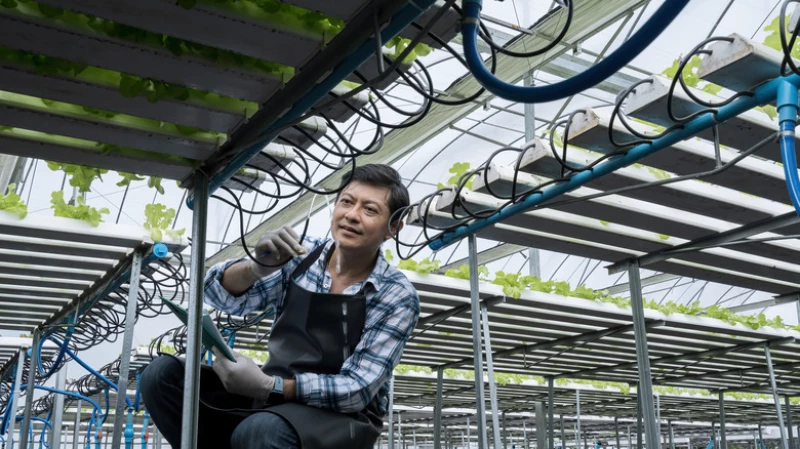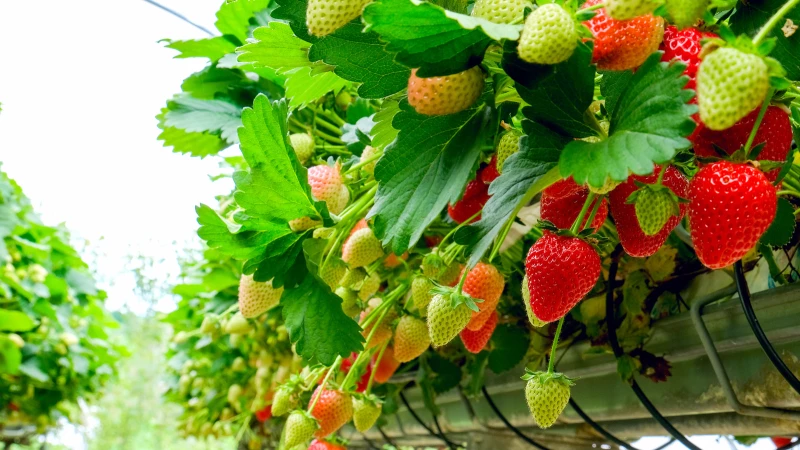Strawberries, packed with vitamins, antioxidants, and minerals, are a delightful addition to jams, smoothies, and jellies. However, their limited availability and high prices during the winter have led home gardeners to explore new methods. Hydroponic gardening has become popular for growing strawberries, allowing plants to thrive without soil. In hydroponics, strawberries are grown in a nutrient-rich water solution, or some gardeners opt for solid mediums like coconut coir or rockwool for better root support.
Benefits of Growing Hydroponic Strawberries
Embracing hydroponic strawberry cultivation comes with numerous advantages. By opting for a soilless approach, you can elevate the planting height, facilitating vertical allotments and easing the strain on your back during berry harvests. Moreover, this method eliminates soil-borne pathogens like nematodes that can harm fruit production. On the flip side, hydroponic systems enhance yields by enhancing the roots' access to oxygen and nutrient intake. Furthermore, having full control over the growth conditions enables you to cultivate strawberries at any time and in any location, ranging from the driest to the coldest regions. Additionally, the reduced water and fertilizer needs serve as the cherry on top. According to AmHydro, a hydroponic system vendor, hydroponically grown strawberries demand only ⅒ of the water and ⅙ of the fertilizer compared to soil-grown counterparts.
Setting up a Hydroponics System for Strawberries
Even individuals with less-than-green thumbs can successfully grow hydroponic strawberries with proper planning. To kickstart the process, begin by selecting a certified disease-free strawberry variety. Opt for day-neutral varieties that bear fruit regardless of day length or everbearing types that yield three times a year, such as Douglas, Tuft, Brighton, Albion, and Monterey. You can choose to start with plugs (small plants with roots), separated runners, or seeds, although the latter option will require a longer time, typically two to three years, to produce fruit.
Choosing the Best Hydroponics System for Growing Strawberries

When it comes to growing hydroponic strawberries, selecting the right hydroponics system is crucial. Two popular options are the Ebb and Flow system and the Nutrient Film Technique (N.F.T.). While drip irrigation is also available, many prefer the Ebb and Flow and N.F.T. systems for their efficiency.
The N.F.T. system involves constantly pumping and recycling nutrient solution through a pot containing multiple clay pellet-laden strawberry cuttings. On the other hand, the Ebb and Flow system follows a timer-based approach where young plants are flooded periodically. Consider factors like your budget, available facilities (such as pumps or drainage), and the strawberry variety when choosing a system. Lighter alpine varieties with shorter fruiting seasons tend to do well with the N.F.T. system.
While you can create your hydroponic system from scratch, opting for a ready-made system can simplify the process, especially for beginners. Additionally, it's essential to choose a potting medium that is highly porous to meet the oxygen demands of strawberry roots. Avoid using 100% coconut coir, as it can restrict plant growth. Instead, mix it with perlite or rockwool for better results. Maintain the pH levels of the substrate between 5.5 and 6.0 for optimal growth.
For successful growth of strawberry plants, it is important to provide a nutrient solution that includes nitrogen, phosphorus, and potassium. However, it is crucial to maintain the nitrogen level at 10% to prevent aggressive shoot growth and avoid the soil from becoming too alkaline. Additionally, incorporating trace elements like calcium and magnesium is essential. Utilizing variety-specific nutrient solutions available at garden centers is recommended for optimal plant health.
To ensure proper growth conditions, maintain temperatures between 60 and 70 degrees Fahrenheit and provide adequate lighting either through natural sunlight or LED growth lights. Promote pollination by gently shaking or swabbing cotton over the planted plugs. Remember to harvest the strawberries when they are ready for the best flavor and quality.







